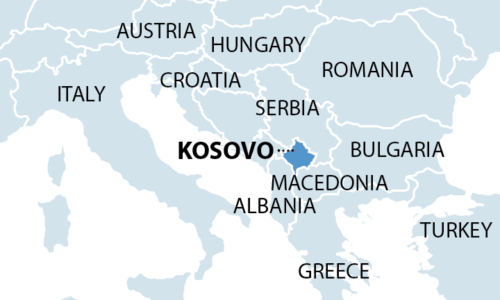IEEFA update: New renewable energy projects undercut business case for coal in Kosovo

 New deals to develop wind and solar power in Kosovo are likely to kill off any remaining business case for new coal, already on the brink of collapse after the World Bank withdrew from financing a proposed new plant in October last year.
New deals to develop wind and solar power in Kosovo are likely to kill off any remaining business case for new coal, already on the brink of collapse after the World Bank withdrew from financing a proposed new plant in October last year.
The World Bank at the time proposed a package of less polluting, less carbon-emitting energy sources as an alternative: Kosovo’s electric grid is presently almost entirely fuelled by two of Europe’s dirtiest coal-fired power plants.
RENEWABLES SUCH AS WIND AND SOLAR GENERALLY DISPLACE COAL AND GAS from the electric grid, when available, because they have zero fuel costs.
Kosovo did not publicly respond to the World Bank’s alternative proposal, but it has since negotiated a new, more bankable support regime for existing renewables projects with the European Bank for Reconstruction and Development (EBRD).
EBRD refinanced a 32MW wind farm in eastern Kosovo, the country’s first
As a result, the EBRD this summer refinanced a 32 megawatt (MW) wind farm in eastern Kosovo, the country’s first, which began operating late last year. And it is considering financing a larger, 105MW wind farm currently under construction in the country’s northern municipality of Mitrovica, expected to start operations in 2021.
The wind farms will bring the country’s total renewable generating capacity to 207MW, alongside 70MW of existing hydropower.
Furthermore, Kosovo last month signed an agreement with the World Bank’s International Finance Corporation for advice regarding a proposed 50MW solar PV project.
SIGNIFICANTLY, THE EBRD HAS ALSO AGREED TO HELP KOSOVO PLAN A SERIES OF RENEWABLES AUCTIONS to finance new wind and solar power projects, via an EBRD procurement tender that closes this week.
These auctions will help the country meet its target to source 25% of total energy demand from renewable sources by 2020, including the heating sector where Kosovo already uses significant quantities of biomass,* and to install 400MW of renewable energy generating capacity by 2026.
Kosovo can achieve around a 30% capacity factor for onshore wind and a 16% capacity factor for solar
World Bank data indicates that Kosovo can achieve around a 30% capacity factor for onshore wind in the north and east of the country, and a 16% capacity factor for solar, implying around 430 gigawatt hours (GWh) of electricity generation annually from the above-mentioned wind and solar projects, operating, planned or under construction.
That is already starting to eat into the 2,370GWh generation theoretically available from a proposed new coal plant with 450MW net capacity, if that is assumed to run at the same 60% capacity factor as historically achieved at the country’s existing 960MW of coal-fired capacity.
Kosovo could further reduce the need for any new coal generation from improved energy efficiency and better interconnections with its neighbours.
*The latest statistical data from 2017 shows that Kosovo has reached almost 23% share of renewables in gross final energy consumption, at least 18% of which is from biomass/wood burning.
Gerard Wynn ([email protected]) is an IEEFA energy finance consultant based in London.
Related Posts
IEEFA update: In Kosovo, Plans for a Power Plant That Would Be Out of Compliance on Day One
IEEFA update: Kosovo’s Latest Coal-Plant Plan Would Violate EU Standards for Market Competition
IEEFA update: Questionable Priorities in Kosovo Coal-Expansion Proposal














